EFK平台搭建(ALIYUN)
环境准备:k8s-master01 k8s-node2 k8s-node2
注意;该环境需要10G左右的内存分配,需要给pod节点配置多点内存
Meter节点:
添加 aliyun、aliyuncs、 google 仓库
helm repo add aliyun https://kubernetes.oss-cn-hangzhou.aliyuncs.com/charts helm repo add aliyuncs https://apphub.aliyuncs.com helm repo add incubator http://storage.googleapis.com/kubernetes-charts-incubator查看可用版本
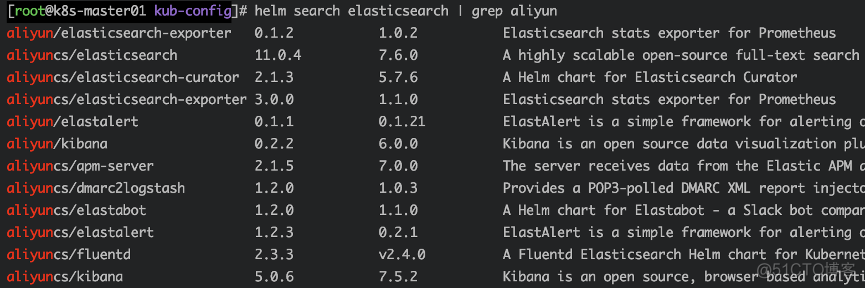
创建文件目录
mkdir efk cd efk/创建namespace命名空间
kubectl create namespace efk下载elasticsearch、fluentd、kibana文件
helm fetch aliyuncs/elasticsearch --version=11.0.4 helm fetch incubator/fluentd-elasticsearch --version=2.0.7 helm fetch aliyuncs/kibana --version=5.0.6解压
tar -xf elasticsearch-11.0.4.tgz tar -xf kibana-5.0.6.tgz tar -xf fluentd-elasticsearch-2.0.7.tgz
部署 ELASTICSEARCH
基于,实验的资源有限,所以需要降低配置
vim elasticsearch/values.yaml
master: name: master
## Number of master-eligible node(s) replicas to deploy
##
replicas: 1 #副本数为1
…
persistence:
## If true, use a Persistent Volume Claim, If false, use emptyDir
##
enabled: false #关闭pv磁盘挂载
…
coordinating:
## Number of coordinating-only node(s) replicas to deploy
##
replicas: 1 #副本数为1
…
data:
name: data
## Number of data node(s) replicas to deploy
##
replicas: 1 #副本数为1
…
persistence:
## If true, use a Persistent Volume Claim, If false, use emptyDir
##
enabled: false #关闭pv磁盘挂载
…
ingest:
enabled: false
name: ingest
## Number of ingest node(s) replicas to deploy
##
replicas: 1 #副本数为1
指定es目录下values所在,部署es

查看pod
kubectl get pod -n efk查看svc
kubectl get svc -n efk
运行pod获取es集群数据测试
kubectl run cirror-$RANDOM --rm -it --image=cirros -- /bin/sh通过curl Elasticsearch:Port/_cat/nodes获取es数据
curl 10.96.228.76:9200/_cat/nodes部署FLUENTD
cd fluentd-elasticsearch
vim values.yaml# 更改其中 Elasticsearch 访问地址
host: 'elasticsearch-client' 改为
host: '10.96.228.76’
在fluentd目录下values所在,部署fluentd-elasticsearch
helm install --name flu1 --namespace=efk -f values.yaml .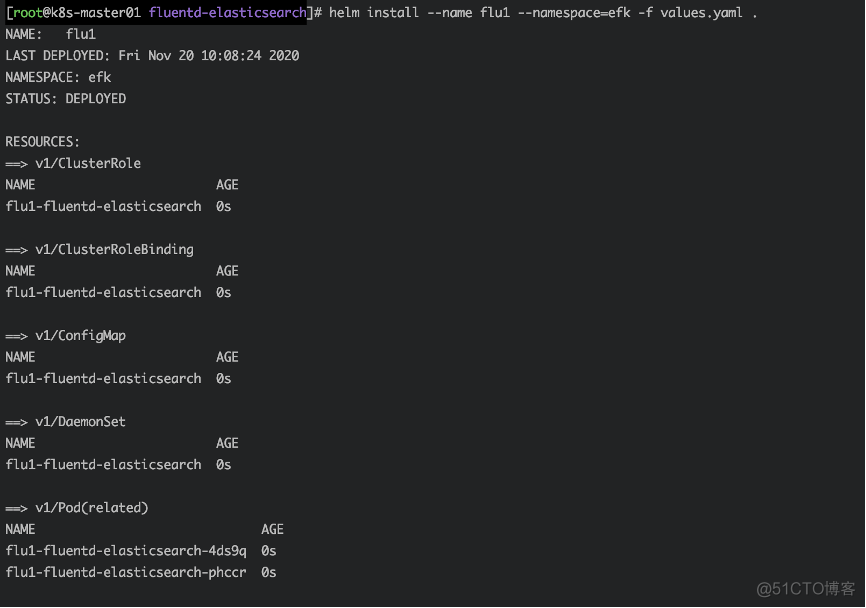
查看pod
kubectl get pod -n efk | grep flu
部署 KIBANA
cd kibana vim values.yamlpersistence:
enabled: false #关闭pv磁盘挂载
service:
port: 80
type: NodePort #svc网络模式
elasticsearch:
hosts:
- 10.96.228.76 #es的地址
port: 9200 #es端口
指定kibana目录下values所在,部署kibana
helm install --name kib1 --namespace=efk -f values.yaml .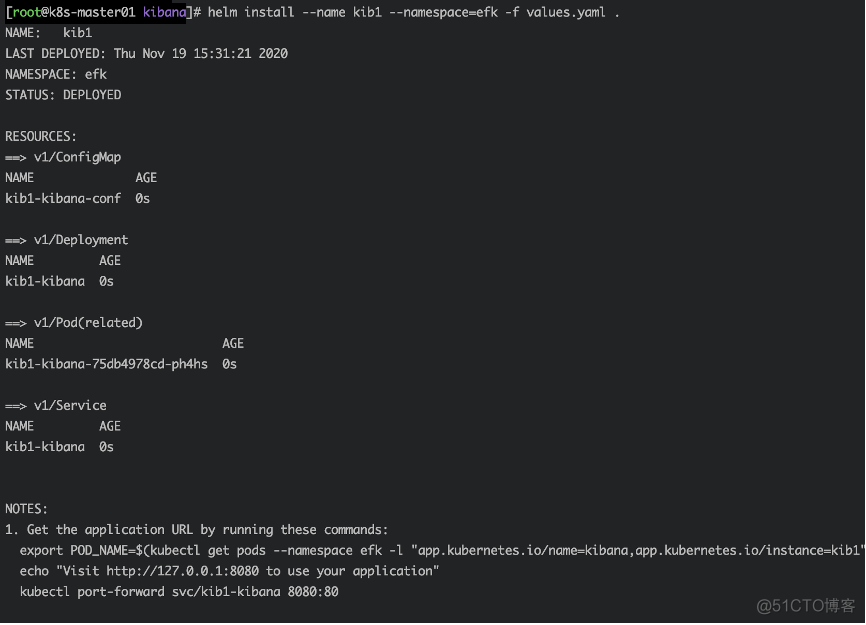
查看pod
kubectl get pod -n efk | grep kib1
查看svc,获取端口
访问KIBANA
google访问
http://MasterIP:端口
新建索引
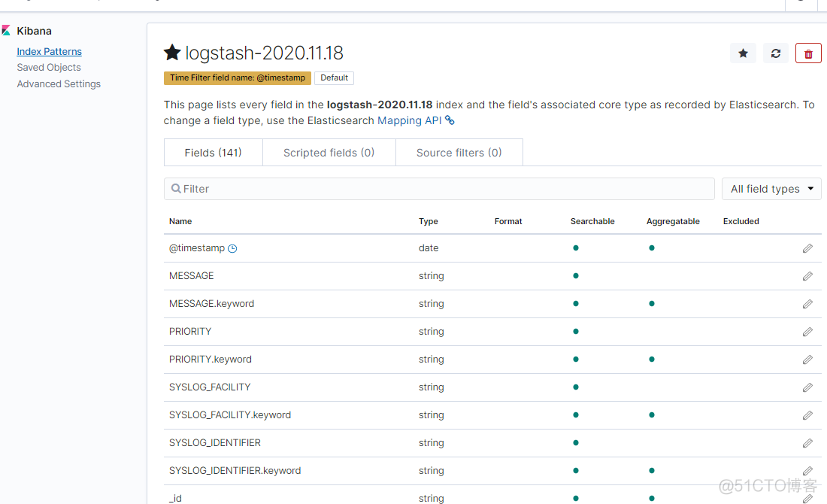
查看获取的数据
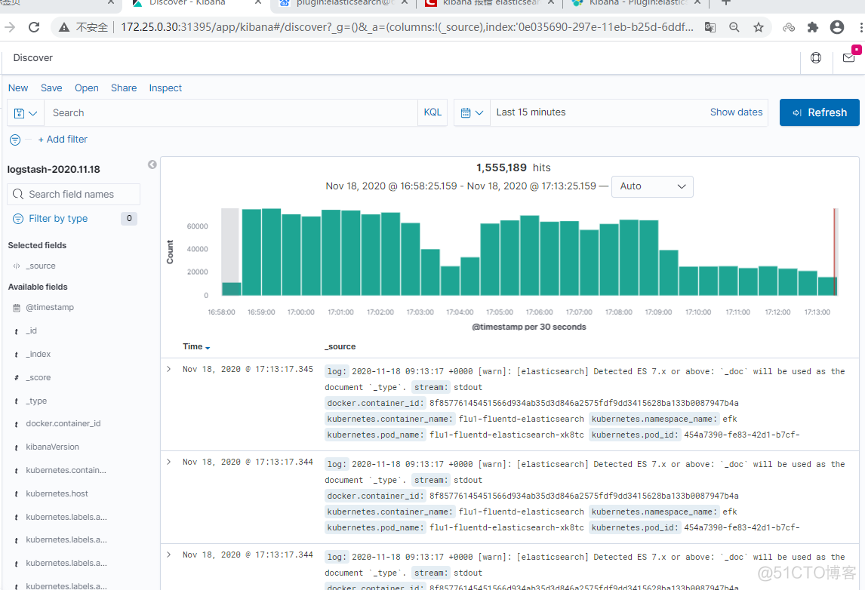
到此已经完成了


